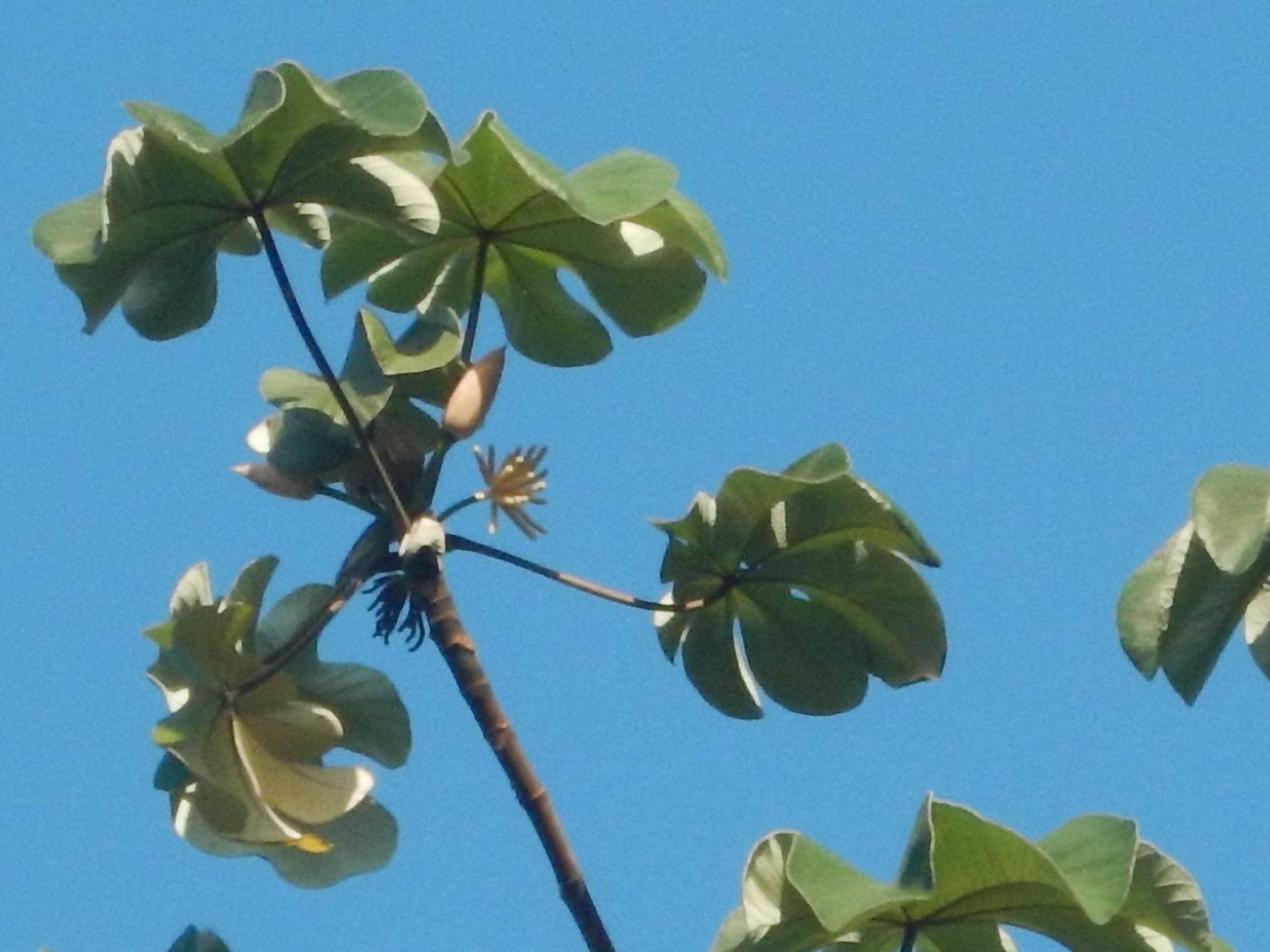We spent this morning retracing our steps from Day 2 to collect our camera traps, but were kept in suspense all day as to what we had caught on them. Scott did not seem optimistic, because on some traps there were only 12 or 13 captures, about the number he would expect from triggering them ourselves by walking past.
In the afternoon we analyzed our data measuring the leaf toughness of Cecropia trees, also called Trumpet tree (Cecropia peltata). Because of the variation in the penetrometer we were using, we didn’t have conclusive results surrounding the correlation between leaf toughness and colonization by ants. Scott also said that in prior years, he had not found such large individual trees lacking colonization by the mutualistic Azteca ants. A queen of the ant species usually colonizes the tree when it is rather small, then there is a delay while eggs the queen lays hatch into workers. They live in the tree because it has a chambered stalk that provides shelter and the tree also has extra-floral nectaries, which essentially means that it provides food for the ants as well. So, when herbivores threaten their home, the ants attack, which benefits the plant. What we were investigating (inconclusively) was whether the leaves might be tougher in trees not colonized by ants yet because they would have to defend themselves against herbivory.
I did some research during the break we took after this and realized that the tree we were working with was Cecropia peltata and not Cecropia obtusifolia, which was the species on my taxon ID card. The clarifying difference was the greater depth between the fingers on the leaves of C. obtusifolia. The leaf overall has a hand shape.

I also figured out that a small tree / bush in the clearing where we saw the scarlet macaws the other day is a guava tree (Psidium guajava). I was befuddled by the identification keys in the Costa Rica and Panama book, but figured it out using the Belize guide. I was able to figure out that it was in the Myrtle family (Myrtaceae) from the first field guide, but I didn’t figure out the exact plant until I dropped the rather worn, thin version of the Belize guide. It had gotten wet a few times, and pages were falling out. On putting the pages back in order, I saw the guava fruit. I pulled the other one out of my pocket to compare, and it was the same. I got the family right, too! I know much more about the trees here on a family level than I do those at home in Texas.
When we finally got around to checking the images on the camera traps in the evening, it was immediately after two presentations, on the biogeography of the region as a whole (including Caribbean) and on mammals. The lecture on mammals turned out to be relevant; we saw a silhouette that may have been a puma, a rainforest rat of some kind, a few birds including a Curassow, and a tapir! Tapirs are huge mammals with long snouts and are herbivores. Apparently, they aren’t aggressive, but like many large mammals, they could hurt you unintentionally. Scott relayed a story of being bitten by a friendly one in Brazil. When he got back to the research station, they said, “oh, you met [name of the tapir]?” Apparently it was often fed, and if you didn’t feed it, it would nip you. Anyway, we got a pretty good image of the tapir, and our results generally supported the hypothesis that the wildlife stays away from the immediate area around the camp—the nearest cameras did not catch much, while the farther ones caught tapir, puma, a skunk, an opossum, and the others mentioned above.



These blogs are great! We wait impatiently to hear experiences and observations which the limits of time have excluded from the blogs.